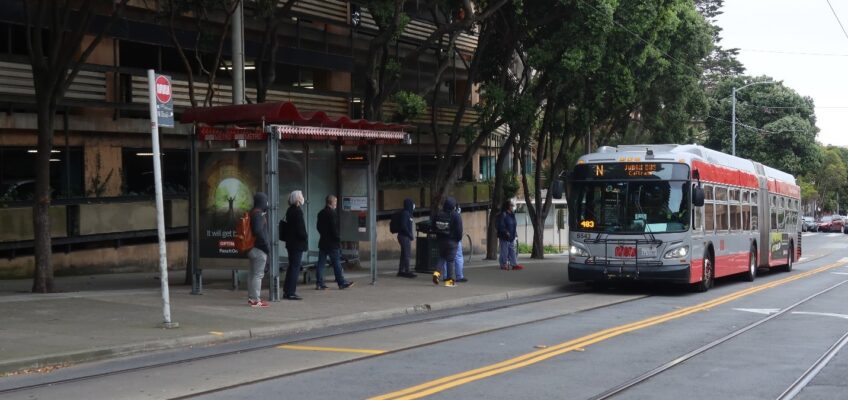Welcome to 2021. It’s New Year’s Day, the first day of a brighter future.
It’s also the first day of Great Transit, an ideas forum for improving the customer experience and building transit ridership in the United States.
We’ve been through a lot in 2020. The pandemic has impacted everyone and sadly nearly 350,000 Americans have lost their lives with the toll still mounting by thousands a day – not to mention other pressing issues such as racial justice and climate change.
An Industry Under Stress
The transit industry has also faced severe headwinds. With stay-at-home orders largely halting office work and special events across the country, millions of transit trips evaporated overnight. Fears of being nearby others have discouraged many riders from transit, while route cancellations have forced other willing riders off transit. In extreme cases, some transit systems have lost 9 out of 10 riders.
Meanwhile, sales tax revenues and other public funding streams have plunged as unemployment has surged and spending has fallen. To protect transit operators from exposure to the virus, many transit agencies have even had to temporarily deactivate fareboxes at the front of buses, resulting in no fare revenue. Fewer personnel are available to operate vehicles, with more resources devoted to cleaning and many transit operators at highest risk to the coronavirus unable to work.
Clearly, this is a crisis of epic proportions for the transit industry. And yet, if there is any silver lining, it is that we are beginning to understand this:
Transit is an essential service
Yes, transit may be in dire straits at the moment, but its wheels have kept turning since Day 1 of this pandemic. Like grocery stores and hospitals, public transportation is fundamental to well-being of our country by allowing millions of Americans to access food, health care and other necessities of life.
Transit promotes equity. During the pandemic, we have seen how essential front-line workers such as nurses, grocery workers, security guards have been to keeping America going – not to mention transit operators themselves. Without transit, many front-line workers who have been impacted by economic inequality and are among the most disadvantaged of all Americans would be faced the additional financial burden of vehicle ownership, operation and maintenance.

Federal Operating Assistance
In an era of extreme political partisanship, the bipartisan Coronavirus Aid, Relief, and Economic Security (CARES) Act represented a breakthrough for transit. Taking effect only weeks after the pandemic began to grip the nation, The CARES Act not only provided $25 billion in funding but allowed transit agencies, for the first time since the 1990s, to use it to operate day-to-day transit service. It also provided $1 billion to Amtrak.
On December 27, H.R. 133, Consolidated Appropriations Act, 2021, became law, providing another $14 billion to transit operators and $1 billion to Amtrak.
Both the CARES Act and subsequent stimulus package marked a fundamental shift in the federal role in transit funding. For decades, the federal government has largely focused on capital expenditures except for rural areas and urbanized areas with populations of less than 200,000 – helping to pay for new vehicles and facilities but not the workers to operate and maintain them.
This stopgap funding has enabled transit agencies to continue providing essential lifeline service while the nation grapples with the COVID-19 crisis and begins widespread vaccinations. Many challenges lie ahead as this money will run out and transit fights to regain lost ridership.
Yet let us not underestimate the significance of the CARES Act and second stimulus bill. By funding transit as an essential service, this change in mindset represents an astounding victory for public transportation.

Transit is essential for cities, economic growth and the environment
For those who believe that this pandemic suggests we should no longer invest in transit and cities because we can remain physically distant forever, consider this: COVID-19 has spread rapidly because people are inherently socially creatures who interact with others. The exponential growth of the virus has impacted urban and rural areas alike, regardless of transit availability and use.
While transit has always been essential for communities large and small, it has been the backbone of many of America’s cities. In a symbiotic relationship that in some cases goes back a century or more, transit has been essential to the growth of vibrant, sustainable commercial districts and neighborhoods. Cities simply do not have limitless physical space to accommodate private cars, ride-hailing vehicles and parking, especially when they crowd out valuable needs such as housing and parks.
As witnessed by record heat, fires and hurricanes in 2020, climate change is already upon us. In the United States, transportation accounts for 28% of greenhouse gas emissions. Transit is a powerful tool to mitigate climate change not only by shifting people to a more environmentally-sustainable form of transportation, but also by fostering more human-scaled development that reduces the distances needed to travel to jobs, education and other essential activities.

A Social Good to Empower People
We need to start thinking of transit along the lines of public education or health care – as a social good that enables people to lead productive lives, not as a business needing to make a profit. Transit will be as important as ever as we navigate out of the COVID-19 crisis. With this perspective, we can make transit great – and we will explore how in future blog posts.
In a nation collectively as well-resourced as the United States, some will question the wisdom of public funding for transit altogether. Others will argue passionately for transit investment, but only in certain places and for certain people. Expect plenty of debate during these uncertain times. Just remember the next time someone wants to defund transit or “right size” transit by reducing service and access, the response is this:
Transit is an essential service
